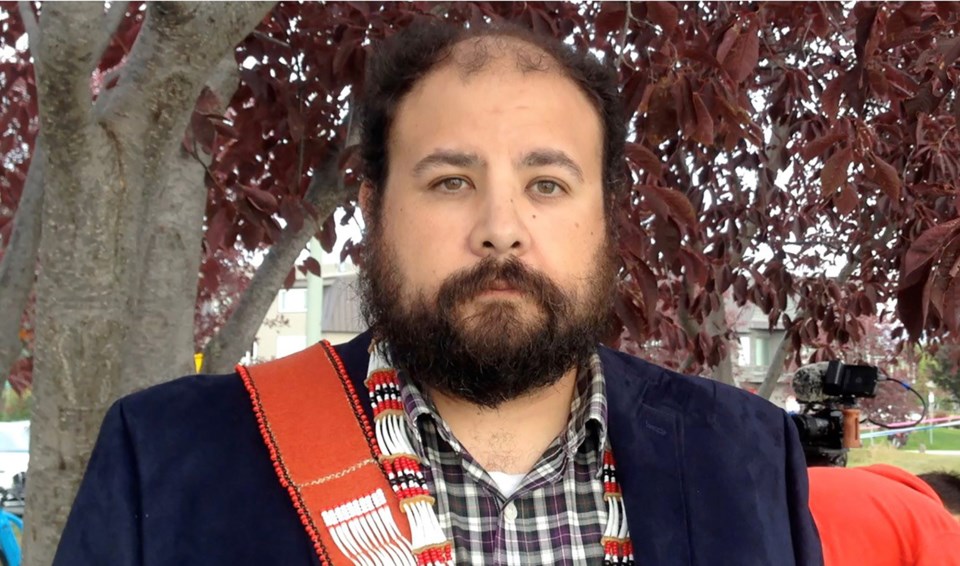ANCHORAGE, Alaska (AP) — Just 15 years ago, most Anchorage residents wouldn’t have been able to answer the question: Who lived here before settlers arrived?
Aaron Leggett, Dena’Ina, has been working to change that.
He’s president of the Native Village of Eklutna and senior curator of Alaska History and Indigenous Culture at the Anchorage Museum. He said the Dena’ina Athabascan people were virtually invisible until a civic and convention center was named after them.
“So in 2006, the Dena’ina Center opened, and it was kind of a shocker for most people because they’d never heard the name Dena’ina. They didn’t think about Anchorage being an Indigenous place,” Leggett told Indian Country Today.
The Dena’ina center is used by thousands of people year-round. Getting their name on it was a “game changer,” Leggett said. That, plus land acknowledgements have brought the Dena’ina people into focus.
Leggett said the growing awareness prompted the Eklutna tribe to do more to build Anchorage’s identity as an Indigenous place. Eklutna is 24 miles (39 kilometers) outside Anchorage, one of several small Dena’ina communities in the area.
“You know, Anchorage as a community is only about 100 years old, but our history goes back well over 1,000 years,” Leggett said.
Last week, about 100 people gathered in Anchorage to celebrate the unveiling of a place-name marker.
A post with information about the original Dena’Ina name for Westchester Lagoon has been installed at a popular downtown park. Chanshtnu means “grassy creek” in Dena’ina.
Artist Melissa Shaginoff, Ahtna Athabascan and Paiute, designed the iron artwork on the post. She said the Indigenous Place Names Project picked the fire bag as its emblem. Firebags were used by the Dena’ina people to carry fire-making tools and tinder.
“So we decided on this object because it really represents a couple of things for Dena’ina people,” Shaginoff said.
It’s valued not only for its beauty and the technology of a utilitarian object, but also as a symbol of leadership and stewardship of Dena’ina people, she said.
At the unveiling, Shaginoff wore a fire bag she’d made and decorated with dentalium shells.
“I made this fire bag, you know, in connection to this object, to the sign. Dentalium represents wealth to Denai people. And wealth to Denai people really represents a responsibility towards community.
“If you have a lot of dentalium, you’re a good person. You’re a good leader. You’re someone who can care for other people. So we really wanted to represent this — that this place-name sign is as much about Indigenous visibility as it represents Indigenous stewardship and care for this land for thousands of years and today,” Shaginoff said.
The Indigenous Place Names Project has installed two place-name markers. It’s raising money for another 30 to place in parks and along the city’s 120 miles of paved bike trails.
Funding for the project came from grants from the Anchorage Parks Foundation, the Rasmuson Foundation and several other donors. They hope to create an audio tour, a website and other projects to enrich Anchorage spaces with cultural history and relevance.
Joaqlin Estus, Indian Country Today, The Associated Press




